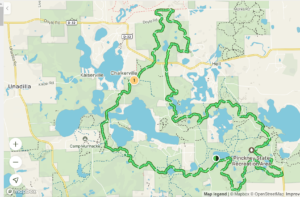

Story and photos by Tom Hodgson
This spring, we have already been treated to the sounds of frogs as they emerged from hibernation and congregated in lakes, ponds and road-side ditches to breed.
This early frog parade included spring peepers, chorus frogs, wood frogs, leopard frogs and the American toad; each filling the early spring air with its own, distinct call.
Those sounds are now fading, but are already being replaced by the calls of other species.
The first warm weather nights of early May have already been filled with the short trills of gray tree frogs. Tree frogs come equipped with large sticky pads on the ends of their toes that allow them to easily climb vertical surfaces. They are often seen climbing the glass of door walls and picture windows on warm summer nights, in pursuit of insects that are attracted to the light.
What they may not be as well known for is their ability to change color. They appear bright green when sitting on a green leaf, but will soon change to a dull gray after moving to a nearby tree trunk.
They sit motionless during the day with their legs and feet tucked under their bodies to reduce water loss. When darkness falls and the humidity raises, they come to life. Their calls begin in May, but will persist well into the summer.
To see and hear to a gray tree frog, click here.
In late May and early June the green frog adds its banjo-like call to the frog chorus. The pre-school song “Guck, Goom went the Big Green Frog” provides a pretty accurate description of its call. Although most breeding takes place in June, green frog calls can be heard most of the summer.
To see and listen to a green frog click here.
The bullfrog is the largest Michigan frog with a body length of up to 6 inches and a maximum weight of nearly two pounds. Its large hind legs and webbed feet are longer than the body. Many a bullfrog has been sacrificed for its edible and delicious hind legs. There is an open season on bullfrogs in Michigan.
The details are spelled out in the Michigan fishing guide.
The bullfrog is named for its low bellowing call that is said to resemble that of a bull. The male bullfrog has a yellow throat, while the female’s is white. Both green and bullfrogs are only found in permanent bodies of water, as their tadpoles take two to three years to transform into frogs.
To see and hear a bullfrog, click here.
















I found this interesting and informative !
I love these nature articles ! !
Enjoyed the nature lesson!🦎🐸